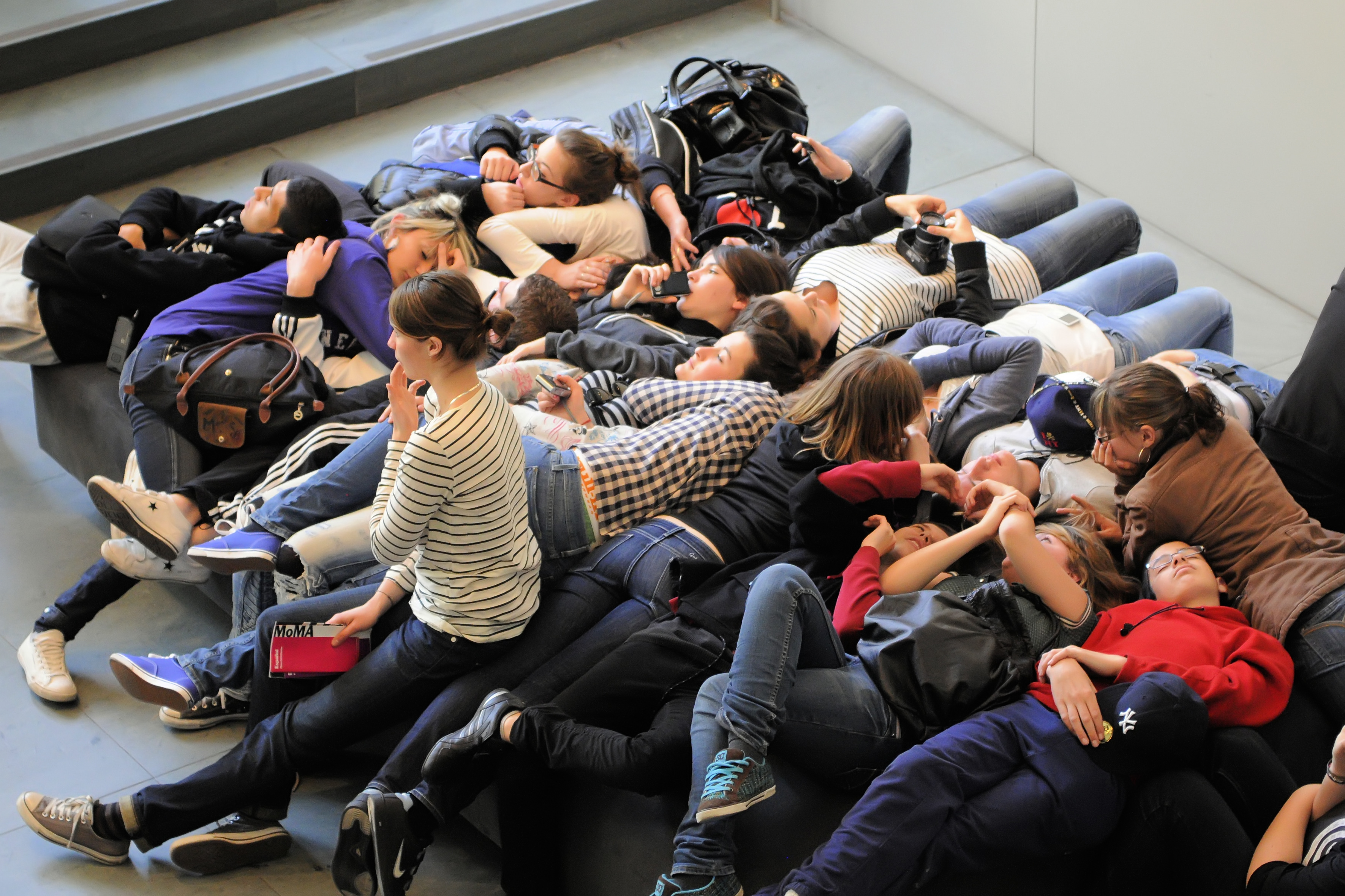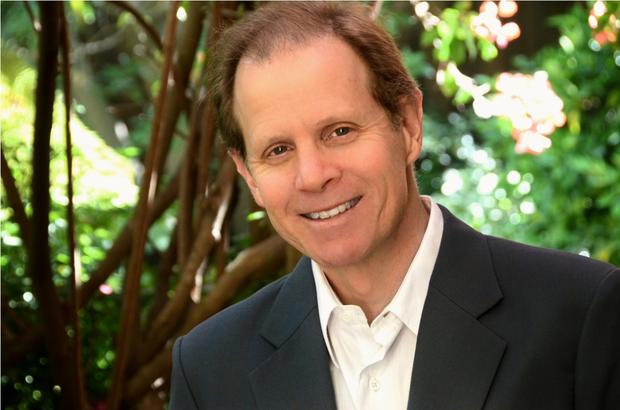by Molly Petrilla republished from Smart Planet, Dec.7, 2013

Siegel unravels the courage and creativity of adolescents -- and reveals that teens are both impulsive and hyper-rational.
Teenagers don’t have the best reputation. They’re often called reckless and immature or written off as self-obsessed adult-haters. But as neuropsychiatrist Daniel Siegel watched his own kids make their way through adolescence, something occurred to him: This was nothing like all those pop-culture stereotypes.
When he couldn’t find a book written for adolescents about the changes happening in their brains, Siegel decided to write his own. He began looking into the science behind the teenage brain and “I was shocked to find the disparity between what science was saying and what popular views of adolescence are,” he says. “Then I thought, maybe this book should be for adults, too.”
The result was Brainstorm: The Power and Purpose of the Teenage Brain, which will be released later this month and is aimed at both teenage and adult readers. Several weeks before its publication date, the book was already ranked the second highest-selling book in Amazon’s parenting-of-teenagers subcategory — but Siegel is no stranger to bestsellers. A psychiatry professor at the UCLA School of Medicine, he has already written several of them, including The Developing Mind and The Whole-Brain Child.
He recently spoke with us about the brain during adolescence — a period that spans ages 12 to 24 — and explained why he says, with complete confidence, that “the reason we’ve populated every aspect of the planet is because of the courage of adolescents.”
Taking the second half of your subtitle first: What is the purpose of the teenage brain?

Going from the dependency of childhood to the responsibility of adulthood requires not just a leap, but a transformation. The brain needs a transformative time to prepare for that. At a species level, for us to adapt to everyone on the planet, you can’t just accept what the current adult population has learned and transmitted to you in your childhood. You’ve got to push away from that and start thinking in new ways. For the individual, at a very basic level, there need to be changes in the brain that allow you to leave home and start changing out the combinations of genes so we diversify the gene pool. If you remain in the role of dependent child, you’ll never figure out how to approach dangers and challenges while you’re doing all this. It’s a time where you have to court danger and take risks so you’re ready for adulthood.
In Brainstorm you talk about four major aspects of the teenage brain, all of which seem geared toward those broader purposes. What are those aspects?
I love acronyms, and I call this one ESSENCE. ES is emotional spark. The lower parts of the nervous system rise up and affect the higher part of the brain — the cortex — which gives us this passion and vitality. The SE is social engagement. The brain is literally programmed to start having you turn to your peers rather than your parents and engage socially with your peer group. The brain’s change in dopamine drives you to experience novelty [N] as very rewarding, and that allows you to go out and take risks. And CE is creative expression. The brain is achieving new levels of complexity that open the mind up to creatively exploring the nature of reality in a new way.
Digging into that last one, you write that adolescence is “a golden age for innovation” and “the gateway to creative thinking.” Why is that?
When adolescence comes, we’re programmed from an evolutionary point of view to push away from the status quo. In concrete terms, we push away from our parents and parent figures. But from a more abstract sense, we start imagining the worlds that don’t quite exist yet. Those are the sources of creativity: this push against what exists to not only think out of the box but to actually re-imagine the world. If you look at the data even in science, which is a hard field, a lot of the new ideas come from people in their adolescence. That’s true in art and music, too, and obviously in technology.
How does ESSENCE apply to adults? Is it something we can hold on to through life, or at least reclaim now that we know about it?
The ESSENCE of adolescence is something you don’t ever have to let go of, but if you have and now you need to reclaim it, there are things you can do. To get your emotional spark back, I would suggest using mind-training practices to enhance your awareness of non-verbal signals that arise from your body. You also get used to the familiar and the routine as an adult. To bring back novelty, simply try new things; introduce new things into your life on purpose.
You also write that it’s inaccurate to dismiss adolescents as simply impulsive. In fact, you say that they can actually be too rational when making risky decisions.
The research term is hyper-rational thinking. It’s related to the idea that the appraisal centers of your brain highlight and emphasize and amplify the meaning and significance and import of a positive aspect of an experience. If I’m going to drive a car 100 miles an hour, it would be how thrilling that will be. The potential cons — I could crash into a tree, I could kill someone, I could kill myself — are minimized. When you hyper-rationally do your calculation, you say that the chances are very likely everything will be fine. There may be a five percent chance I’ll crash but a 95 percent chance I won’t. Sadly, the hyper-rational thinking accurately assess probabilities, but it de-emphasizes the severity of the negative outcome, simply because there’s only a slight chance it will happen.
What are some of the other major myths you discovered about adolescence?
One is that to grow up, adolescents need to be totally independent of adults. In fact, adolescents need adults in their lives. We don’t have much in the structure of modern society that provides trusted, non-parental adult figures that the adolescent — whose brain is naturally pushing away from parent figures — can turn to during this transformative period of life. We need to rethink that as a society.
I also disagree with the belief that adolescence is this horrible time of life that you just have to get through. I think the courage to creatively explore the world is an untapped resource for humanity. If we don’t work together to solve some of the world’s most pressing problems with the help of adolescent minds, then we’re not going to do so well.
Is there something that still puzzles you about the teenage brain, even after writing a book about it?
So many things! Mostly there are fundamental questions about how we can reach individuals entering the adolescent period to minimize danger to themselves or others. We need to really think deeply about how to develop communities of support for teens.
The 2014 Bridging the Hearts and Minds of Youth Conference is pleased to announce the welcome addition of Dr. Daniel Siegel (author of the forthcoming book Brainstorm: The Power and Purpose of the Teenage Brain). Dan will offer a keynote talk on Saturday afternoon following the regular sessions. The general public will be able to purchase tickets to hear his talk, and attendance will be free for conference registrants.

